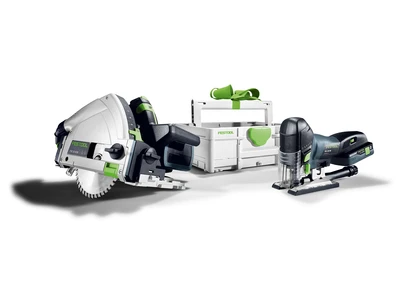Whether in the workshop, on the construction site or at home: The Festool App is your companion for smart working and perfect results.






In addition to matching the material to be sawn, the cutting angle, tooth geometry and number of teeth also play a decisive role when sawing. As a general rule:
- The higher the number of teeth, the better the cutting result.
- Therefore, if you need a clean, precise and splinter-free cut for your application, you should choose a circular saw blade with many teeth, as these cut the material consistently.
- A blade with a lower number of teeth is sufficient for separating cuts, for example on invisible edges or in coarse materials such as OSB boards, where speed is more important than a splinter-free cutting edge.
The cutting direction is also crucial for woodwork.
- Saw blades with more teeth are generally better suited to cuts across the grain.
- When cutting lengthways in the direction of the grain, you can often cut more efficiently with fewer teeth.
The smallest detail makes all the difference – the tooth geometry describes the specific shape and arrangement of the teeth on the blade. It has a significant impact on the way the saw blade cuts the material. We have summarised the most important tooth shapes for you:
Sharp for longer

Smooth and low-vibration.

Thinner, faster, further.

Cutting results

Effort

Burns and discolouration

Unusually loud noises















































